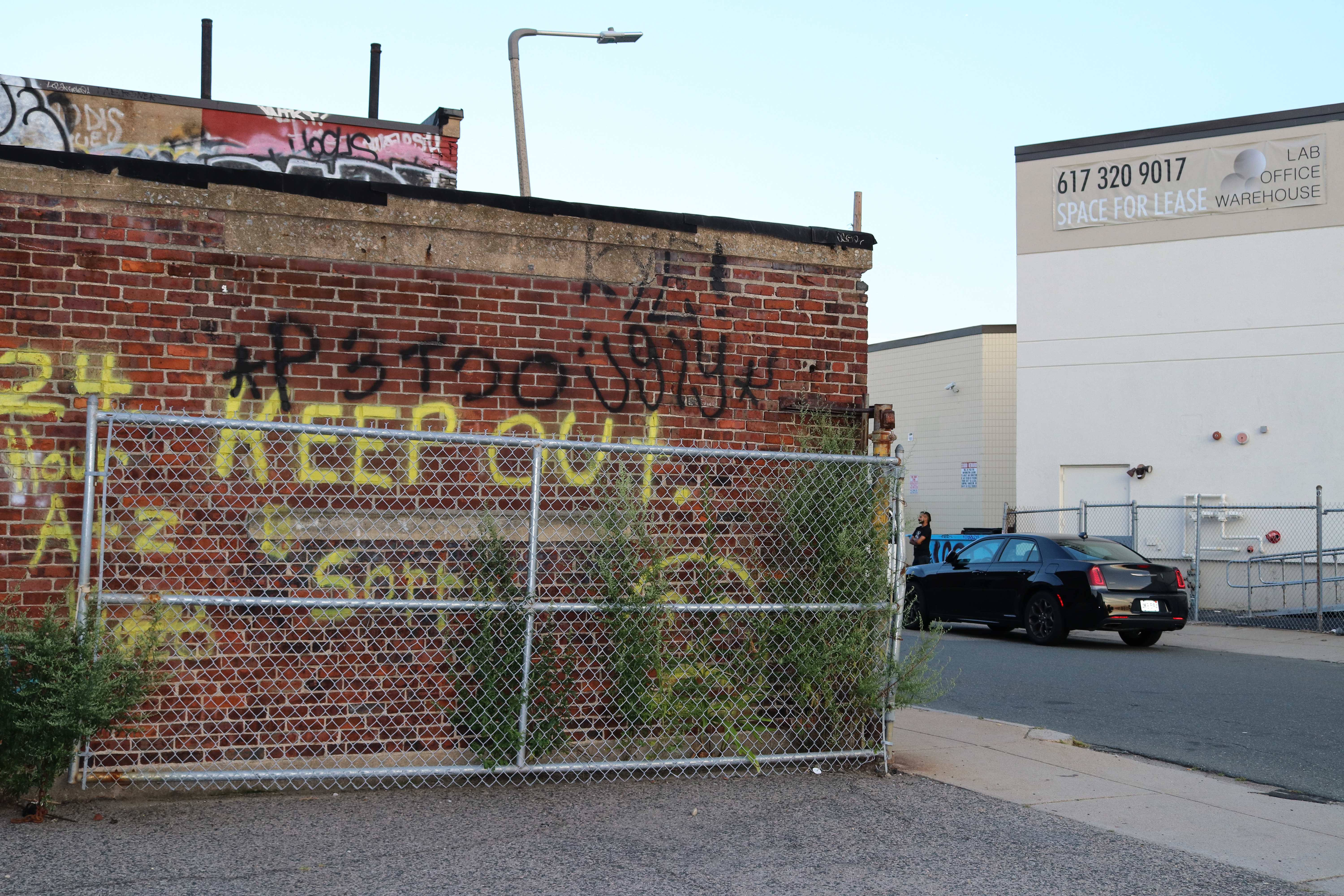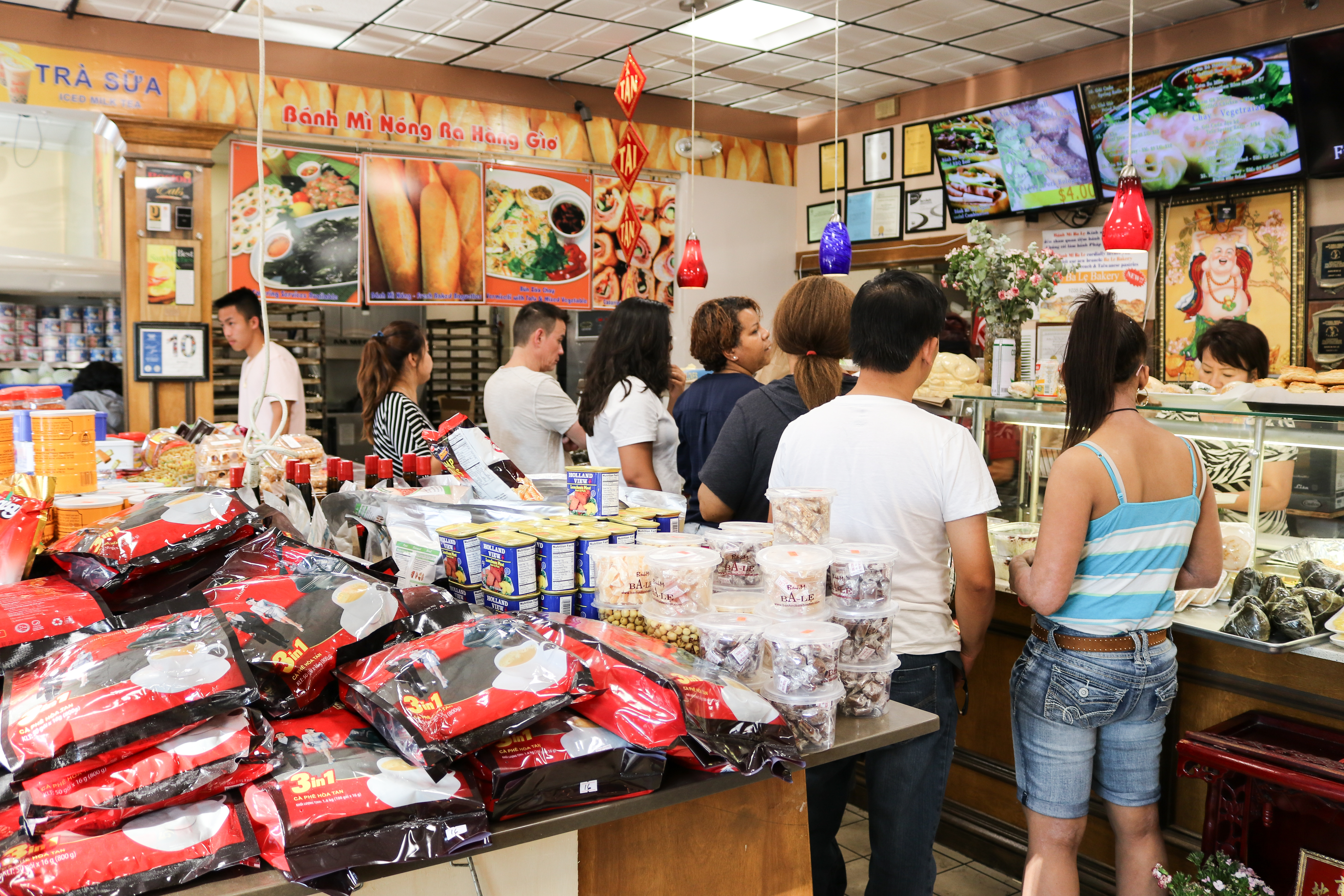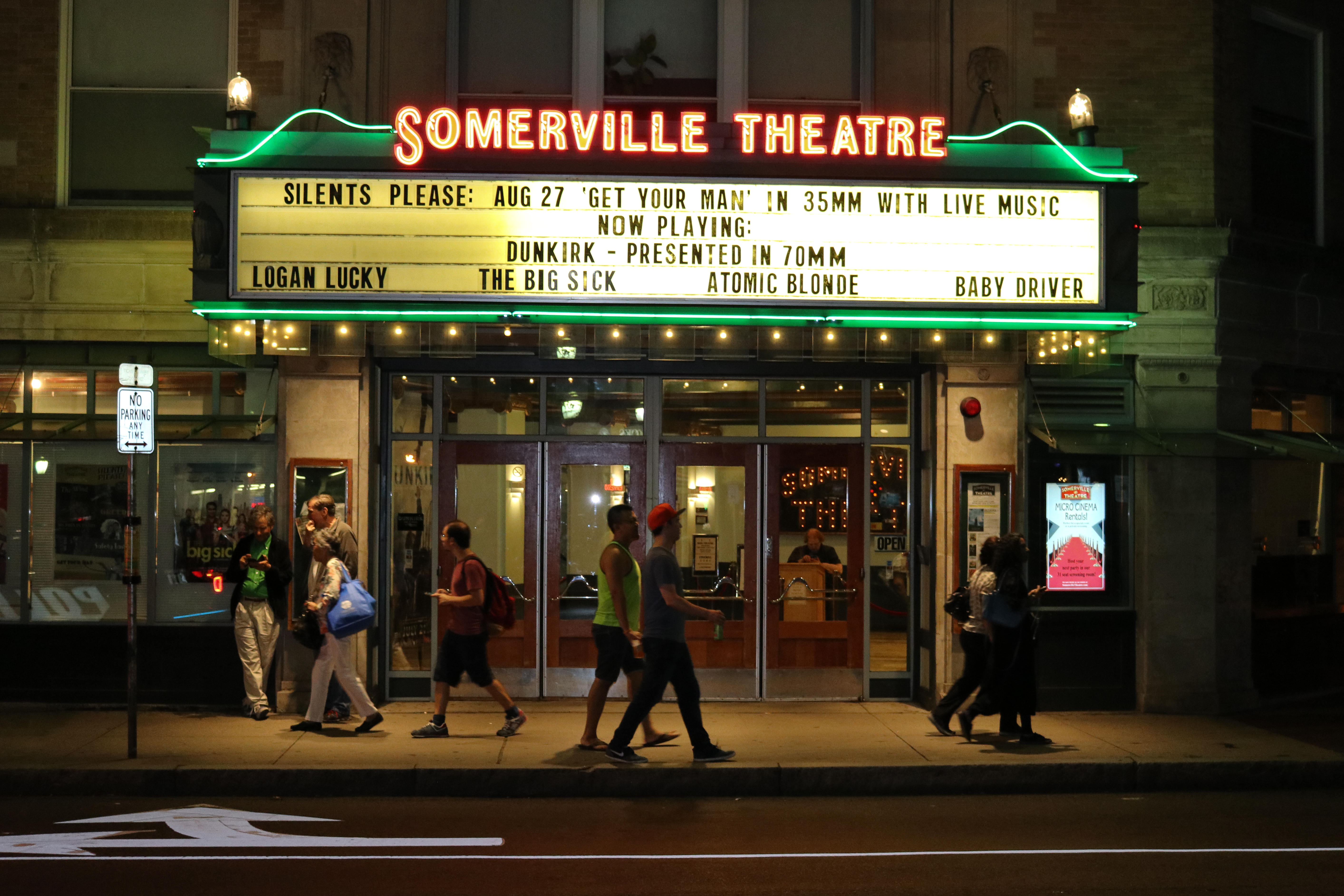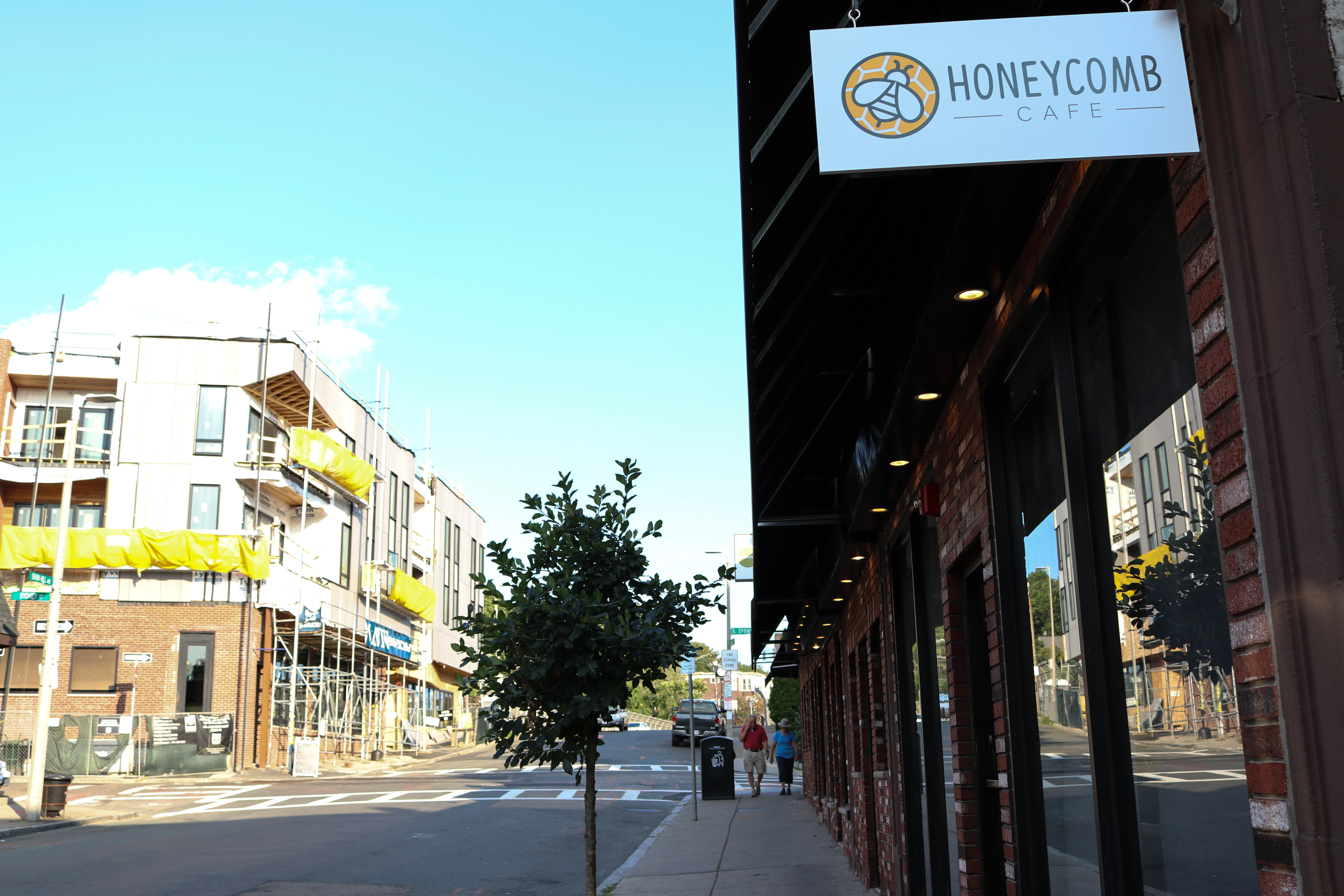Dorchester has become increasingly yuppified, according to some residents. Honeycomb Cafe, located near the Savin Hill MBTA Station, recently opened. (Photo by Olivia Deng)
Shitty. Trendy. Townies. Yuppies. Teamsters. Bourgeoisie. Gritty. Upscale. Bleak. Vibrant.
The meaning of these words takes on various dimensions in the context of neighborhood development, as developers and politicians use words like “up and coming” and “vibrant” to create the desired image of a neighborhood they’re developing. Real estate investment firms such as Mount Vernon Company brand a neighborhood with the population they want to attract there. For example, despite being home to families and known as “Rat City,” Allston is heavily marketed as a neighborhood of “young professionals.”
When a shiny new Whole Foods rises from the concrete and ousts the dingy dive bar, that’s a tell-tale sign of a neighborhood gone downhill in the eyes of residents who mourn the loss of neighborhood character. To fight back, residents also take control of language to take a stand against racism, classism and unwanted neighborhood changes.
In Boston, this battle between developers and residents has been played out multiple times in neighborhoods such as Allston-Brighton, East Boston, Hyde Park, Jamaica Plain and South Boston. According to real estate research firm NeighborhoodX, those neighborhoods, which rank mid-range in terms of ownership desirability, are ripe for more gentrification.
How developers and activists use language drives both gentrification and the fight against it. Because language shapes the way people see the world, people frequently adapt words to suit their goals in the context of political and social issues, said Lera Boroditsky, associate professor of cognitive science at University of California San Diego.
“All these discussions are negotiations about how we use these words in a language and the policies and laws that stem from this usage,” Boroditsky said. The words people use ultimately shape a neighborhood’s path. “People make a bid, put forward a language that will advance their agenda,” Boroditsky said. “And others fight back, saying, ‘I don’t accept your metaphor, your framing.’”
“Growth and Prosperity” meets “Keep Allston Shitty”

Boston Planning and Development Agency, a public agency that oversees development in the city, uses positive, upbeat words to characterize property development. Gina Physic, digital media specialist at BPDA, said that with growing population density, the BPDA needs to ensure “that growth and prosperity reaches every corner of Boston.”
Not everyone agrees with BPDA’s characterization, especially when it comes to its use of the word “prosperous.” Abby Anastasio, a 2017 graduate of Berklee College of Music, said that the prosperity is limited only to those who are already privileged. “The way to create jobs isn’t to price people out of neighborhoods … It kind of just seems like another word for bringing rich people and their jobs to neighborhoods.”
Anastasio, a songwriter who also works as a hostess and server, currently lives in Brighton. What drew her to Allston-Brighton is the scrappiness, the DIY scene, the tattoo and piercing shops and the community of young people who share her interests.
However, developments near Boston Landing and Packard’s Corner left Anastasio concerned for the future of Allston-Brighton. “The more chains I see, the more sad I get for small businesses,” she said. Anastasio said that the new luxury apartments and chain stores signify the loss of Allston-Brighton’s character.
Allston has been hit with new large-scale apartment developments, including one on 40 Rugg Road. Anastasio said that continuing on this trajectory would transform the neighborhood into a hostile environment for artists. “Boston’s already suffering from a dearth of creative types, and it’s only going to get worse if we’re priced out of our neighborhoods for having the audacity to work in our field,” Anastasio said. “[The yuppies are] gonna make Allston not shitty anymore.”
“Keep Allston shitty” pops up throughout Allston, graffitied on walls and scrawled on sidewalks. “The ‘keep Allston shitty’ tagline sounds like a reappropriation of the terms like ‘queer’ by the LGBTQ+ community. ‘This is something you think is negative, but we think it’s positive.’ That kind of reclaiming can have a lot power,” Boroditsky said. “We’re not going to let you label us—we’re going to reclaim the word and use it ourselves.”
Allston has evolved from a neighborhood of families and homeowners to “grunge, rock Allston” to something on the cusp of “trendy chic Allston,” said Charlie Vasiliades, a community activist who is on the board of directors of Allston Brighton Community Development Corporation. Vasiliades lives in the Brighton house his parents bought in 1959 when he was two years old.
To drive forward this transformation in Allston-Brighton, developers relied on the neighboring Brookline’s reputation as a wealthy neighborhood in their messaging and to direct people through Coolidge Corner in Brookline to get to Allston, Vasiliades said. “Before Allston became so trendy, there were a number of developments on Brainerd Road … For a long time, they [tried] to pick up the cachet of Brookline,” he continued.
Mount Vernon Company, which lists two Brainerd Road properties, boasts about Allston’s “trendy new restaurants, shops and clubs” and advocates for the easy access to Brookline and Downtown Boston.
Vasiliades added that the Whole Foods, which has a Brighton address, was originally marketed as Whole Foods Brookline in an effort to borrow Brookline’s affluent association.
To fight back against overdevelopment, Vasiliades said that he and other community activists rally around the word “stabilization.” “Whether we’re owners, or renters, we want to create a stable neighborhood that people are proud to call home,” he said.
Rising Rents Threaten Dorchester’s Diversity

Kristine Acevedo, a community activist who has lived in Dorchester since 2008, loves her neighborhood for the diversity of its residents.
“You have a lot of Haitian, Cape Verdean, Vietnamese and Latinx [people],” she said. “You will find the best Vietnamese sandwiches, the best pho around the city.”
To Acevedo, this diversity breathes life into Dorchester and fuels the many activist groups organizing for peace, jobs and food justice. “Whenever there’s parades or any kind of festival, it’s because of the fact that you have this population,” Acevedo said. But some look at Dorchester with disdain. “They don’t bother coming to Dorchester. They think it’s too far away, they think it’s a place that’s violent, they think it’s a place that’s not safe,” Acevedo said.
To justify fixing the “ghetto,” the culture is being sucked out of Dorchester with property developments, Acevedo said. Dorchester has seen some of Boston’s fastest growing rents since the last financial quarter, with a 9.4 percent increase in price, according to Zumper. “It’s astonishing to see all the luxury housing that’s been going up throughout the years. We really don’t have a lot of affordable housing at all,” Acevedo said.
To address affordability concerns in Boston, the Housing Boston 2030 report, released by Mayor Walsh’s administration in July, stated a goal of creating 6,500 new low-income and 20,000 new middle-income housing units by 2030. They also declared their goal of generating new ownership and maintaining current ownership for the middle-class population. A press release on Walsh’s campaign website touts the creation of housing units affordable to low and middle-income earners. “Of the 13,551 new units of housing completed, 40 percent are affordable for low and middle income households,” the press release states. Furthermore, the press release describes projected middle-income housing production for 2017 as “record-setting,” a term not used to describe low-income housing production.
However, Dorchester activists like Acevedo call those goals misleading.
Acevedo said that by using the term “middle-income,” Walsh is referring to people who make roughly $75,000 a year, rather than people who make $30,000 to $40,000 a year. Those people, Acevedo said, are the types of people Walsh wants to attract to neighborhoods such as Dorchester. Rather than making the neighborhood affordable for low-income residents, the rhetoric implies generating an influx of middle-income newcomers, she said. According to a report by American Community Survey, the per capita income for Dorchester was $22,120 in 2011. “In Dorchester, the average income is a hell of a lot lower [than $30,000 to $40,000 a year],” she said. “How can someone making $11 an hour afford to live in a place that costs $2,000 a month? You can’t.”
According to Boston Housing Authority, a department within the City of Boston focused on providing affordable housing, a waiting list may range from 1,200 to 13,000 applicants. Affordable housing is commonly defined as housing that costs 30 percent of someone’s income, a standard acknowledged by the Department of Housing and Urban Development.
Kathryn Bennett, deputy administrator for planning and sustainability at BHA, said she acknowledges resident concerns about the lack of affordability, casting the “deeply affordable” units for households making $14,000 a year into a category of its own (even housing for those in the federal poverty range can be rebranded with arguably more upbeat language). However, Bennett also said that a mix of affordable housing is necessary. “We like having a range of units at our sites … We have some moderate and middle-income and some market, that’s a good balance for us,” she said.
Bennett said BHA emphasizes the importance of community input every step of the way throughout the development process by hosting public hearings and informal meetings. “The formal public hearings tend to happen as part of a regulatory [purpose], either for permitting or for our federal HUD requirement,” she said. Bennett added that the public hearings and informal hearings “tend to look pretty similar.” It is a process involving the BHA “explaining what we’re trying to do and why and listening to people’s reactions to that.”
Physic said that these meetings are advertised in “Local newspapers, shared via Twitter and in the BPDA’s weekly email newsletters and neighborhood emails.”
However, Acevedo claimed that these calls for community input are often sent out with short notice and are still under-advertised.
“They are building something that’s across the Savin Hill station and they’ve been asking for community input. The problem is they put out these emails maybe two days in advance to be able to have the community come which is ridiculous,” Acevedo said. “They don’t put [out] flyers, they don’t make it accessible for people.” These exclusionary messaging tactics prevent community voices from being heard, she said.
Internet access can sometimes be a barrier, as indicated by the number of people using Boston Public Library as a source of Internet access. Areas that have the highest number of public computers are Mattapan, Grove Hall and Dudley.
Bennett said there are instances in which residents outright reject BHA’s proposals. But at the end of the day, she said the BHA has an obligation to uphold their mission. “If we have a balanced plan that responds to our residents and to the majority of neighborhood concerns, and it does accomplish that basic goal for us, then we will move forward.”
When Language Barriers Become Housing Barriers

Confusing messaging tactics are applied to take advantage of communities of color in which the residents’ first language may not be English, said Ronel Remy, an organizer at social justice organization City Life Vida Urbana in Jamaica Plain. Remy grew up in Haiti, moved to Brooklyn in 1986 and found a place in Somerville in 1991. Since then, he’s been evicted six times, moving from Somerville to Dorchester to Hyde Park to Roslindale to Randolph to Brockton. Now a housing activist, Remy said he realized how developers and politicians manipulated messaging to displace the people they don’t want in the neighborhoods they invest money in—the people of color, the poor. Now, when Remy visits his old Somerville neighborhood, he can barely recognize it with its high-rise buildings and new stores. “The streets are different. I know nothing over there now.”
Remy said that landlords hide behind complex legal terms meant to obfuscate their actions, complicating things that are supposed to be easy, such as signing a lease. “What I discovered [about] the language [that is used is that] many times folks don’t know it. They don’t understand it,” Remy said. “The legal terms, they don’t understand them.”
According to American Community Survey data analyzed by real estate brokerage firm Redfin, “The top 10 percent of neighborhoods by eviction rate had the highest rates of foreign-born residents at more than 11 percent. Neighborhoods at the bottom 10 percent of evictions had a smaller share of foreign-born residents at about 8 percent.”
What residents do see in plain sight, however, are rent increases. “If I’m living somewhere, if you don’t want me to stay there, first thing you say is you raise the rent higher till I can’t afford it. That’s a sign you don’t want me there,” Remy said. “Once folks see they have to sign a new lease, and the cost is higher, they choose to move. They don’t know they should negotiate … The fear, the insecurity, that sets in makes folks run away, [and] when community gets pushed away, everything is gone.”
Recent efforts to increase the number of affordable housing units cited in the Inclusionary Development Policy 2016 Annual Report touted the creation of an average of 605 affordable units per year in a three-year time span. However, the neighborhoods that have more low-income residents—Hyde Park, Mattapan, Roslindale and Roxbury—have the fewest number of completed IDP units. “There’s a lot of folks of color there. That’s just that. Too often, folks of color don’t have money,” Remy explained.
Neighborhoods like that are heavily policed, Remy said. “There’s armies of cops to control our neighborhood. And then the guns they bring, materials, army materials, basically we’re communities under siege.” Meanwhile, Remy said that developers and politicians sell an image of serenity for a dual purpose—to appease investors and keep the community complacent.
“The investors have to feel happy, secure because they have money. They want to know if they’re going to get their return. The government, the mayor, the city council, they have to speak that way for everybody to feel we should be at peace,” Remy said. “What they do, they pacify the community. Don’t do anything you’re not supposed to do. Be happy. Every once in awhile, they throw you a party, a block party where everybody comes out to see each other. It’s just to keep you on a leash to never retaliate.”
***
To residents, the language used by developers and politicians to justify their property development is oftentimes misleading, ambiguous and exclusive. “[Capitalism] is the only tool they [developers and politicians] have, and they keep milking that to keep everybody in place,” Remy said.
Residents cling onto their neighborhood identities, rallying behind them to defy the unwanted loss of character, displacement and destruction. Boroditsky said that while developers and politicians try to control the narrative through language, residents are resistant to top-down change. “There’s people who have money and organisational power, but languages and language speakers can be very stubborn to top-down change. It has to feel right to the speakers,” she said. “When people don’t want to use language that doesn’t feel right to them, they just reject it.”
Remy said he believes in the power of organizing against housing injustice and forming advocacy groups such as tenant associations. “There is power in numbers. Alone they’ve beat you already. Every time. But together, they don’t,” he said. “If you organize, if you know their language, you fight them with their own language.”

Leave a Reply
You must be logged in to post a comment.